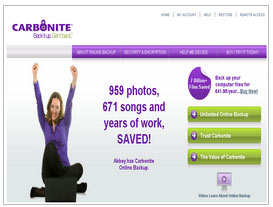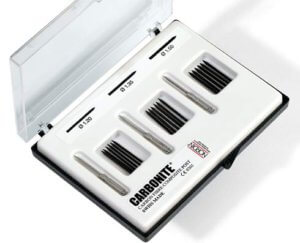

- #Carbonite storage how to#
- #Carbonite storage manual#
- #Carbonite storage trial#
- #Carbonite storage plus#
Finally, Carbonite offers two-factor authentication as well as the ability to use a private key for your backups, which adds up to a fairly robust security model. The service will store deleted or moved files for 30 days on its server, after which point you won’t be able to recover them – another point in favor of competitors like IDrive and Acronis True Image, which can keep deleted files indefinitely. Carbonite does not support deduplication, either, so if you move a large file and re-select it for backup, it’ll back up the entire file from scratch, wasting bandwidth. Typical users probably won’t care about this, but for advanced users looking to back up, say, certain game files, this may very well be a deal breaker. But you literally have to do it for each individual excluded file – you can’t merely select a folder and back it up Carbonite will still ignore any excluded file types from within that folder unless you manually select each and every one. Any of these excluded file types can be backed up by manually right-clicking on them and selecting the backup option. I can understand why they did this – many programs won’t necessarily run properly if you merely back up and restore their folders – but for users that know what they’re doing, this is an annoying limitation. In fact, it’s designed to ignore everything outside of your C:\Users folder. It also won’t back up any files over 4GB, nor operating system files like DLLs, or any EXE file. The basic Carbonite Safe plan won’t back up video files automatically you need to pay extra for a higher-tier plan. Carbonite has a lot of caveats when it comes to the files it’ll back up.

Here’s where things get a little wonky, though. This is different than most backup programs – some may offer right-click options similar to Carbonite, but almost all have a menu within the app that allows you to customize your backup. It’ll show a small orange or green dot next to the icon, similar to programs like Dropbox, indicating its backup status. Just right-click a file or folder and choose Carbonite > Back Up to include it in your backup set.
#Carbonite storage manual#
You can turn on Carbonite’s automatic scanning for recommended files in its settings, but if you want to change your manual backup set, you’ll do so from Windows Explorer. But once you’ve gone through Carbonite’s wizard, there doesn’t seem to be a way to do it again. You can, alternatively, select files and folders manually in a more old-school style, if you don’t trust the program to back up everything you want to keep. If you aren’t sure what you want, Carbonite will use its recommended settings, automatically scanning your drive for personal files (like Word documents, email archives, music, and so on).
#Carbonite storage how to#
Carbonite - Backup and Recover圜arbonite’s initial wizard offers you a number of choices about what to back up and how to manage your account’s security.

Other services, like IDrive, increase their price after the first year, but at least they’re clear and honest about it. Honestly, these hidden prices are still somewhat reasonable, but I’m not a fan of the deceptive business practice of hiding the real cost of the service.
#Carbonite storage trial#
There are discounts for purchasing multiple years up front, and you may also get a coupon in your email during your free trial period (at least, I did).
#Carbonite storage plus#
Those prices, however, are only for the first year – Carbonite is incredibly sneaky about the fact that its prices for Basic and Plus go up to $84 and $120 per year, respectively. The $112 Plus tier adds the ability to back up your external drives and automatically back up video files (more on that in a moment), and the $150 Prime plan includes a discounted courier recovery service, where Carbonite ships a hard drive to you (if your restore is larger than your internet speed could easily accommodate). The “Basic” subscription starts at $72 per year, with unlimited cloud storage for one computer. Carbonite’s feature set also varies depending on the subscription you purchase. But you’ll likely spend very little time in the Carbonite app itself, since Carbonite is designed to integrate directly with Windows instead of a standalone interface. Its window is relatively sparse, with your backup status front and center, and a few extra options hidden behind a button. Once you’re done with the wizard, though, Carbonite’s main goal is to get out of your way. Carbonite - Design, Features, and PricingCarbonite is designed to be friendly to tech-savvy and unsavvy users alike, with a beginner-friendly wizard at the beginning that you can bypass for more advanced options if need be.


 0 kommentar(er)
0 kommentar(er)
